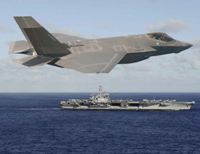There are basically three reasons to cancel an acquisition program. In no particular order, the reasons are:
We can’t afford it.
We don’t need it.
It doesn’t work.
This means Defense Department leaders have to continually ask three important questions throughout the development of a new military system:
Can we afford it?
Do we need it?
Does it work?
The wording of these questions is quite deliberate. Note that question #2 is not “Will we someday possibly maybe need it for some hypothetical future against an opponent who may or may not exist?” Question 2 is also not asking if we need it right this minute – no need to get all short-sighted here. The question is whether we need (present tense) to build it – and the answer might very well be “Yes, we have to build it now because we’ll need it three years from now.”
The other questions are similarly posed in the present tense. Thus, question #3 is not asking “Will it eventually work some day, assuming several breakthroughs and discoveries and new technologies?” No. It’s asking “Does it work?” I think that’s the right question. Developing new technologies is important, but it’s an activity that should be kept separate from developing new systems.
If the answer to any of the three questions is No, then it’s time to seriously consider cancelling the program. If the answer to all three questions is No, we’re definitely in the process of building an unnecessary, unaffordable, unworkable waste of space.
That’s nobody’s idea of a good time.
Of course, life is more complicated than that. Given the uncertainties of world events, political realities and technical developments, these questions don’t always have binary yes/no answers, much less a wide consensus on what the answers are. Further complicating the equation, the answers are seldom static. Today’s no could easily become tomorrow’s yes… and vice versa.
What makes it particularly difficult is that systems in development tend to accumulate hordes of advocates willing to swear on a stack of Constitutions that the republic will not survive without this particular piece of gear. These true believers are inevitably countered by critics who insist with equal enthusiasm that spending another dime on the thing will push our nation into bankruptcy. Each side of the debate is well-armed with stacks of competing data, various assumptions (stated and unstated) and detailed analyses which prove they are right and their opponents are stupid.
So yes, it can be difficult to determine the right answer. But the difficulty should not prevent us from continually asking the questions.

Lockheed
On this note, Stars and Stripes just ran an ironically-placed pair of articles. The top of page 4 featured a piece from the Los Angeles Times about the F-35 Joint Strike Fighter’s ballooning costs, showing how the estimated price tag jumped from $233B in 2001 to $395B in 2011. That’s an increase of $162B for an aircraft that is expected to deliver its first basic combat capability in 2015, assuming all the technical problems can be solved by then. The article quoted Secretary of Defense Leon Panetta as saying, “We absolutely need it for the future.”
Immediately below the JSF story was a piece about the USAF’s pending decision to cut the C-27J Spartan, which the U.S. has been using for combat supply missions in Afghanistan for the past eight months. The Air Force has spent approximately $1B on the Spartan so far and recently signed a contract worth $2B, but the article explained that Air Force leaders now see the small cargo hauler as “a luxury it cannot afford in this era of cost-cutting.”

wiki
If the Spartan is an unaffordable luxury at $2B, it does beg the question of the JSF’s affordability at $395B. We can afford the expensive one but not the cheap one? I think that’s a fair question to ask, since the C-27 is being called “unaffordable” while the JSF’s cost growth alone is 80 times larger than the new Spartan contract.
As for necessity, if we don’t need the C-27J – which is flying in today’s war – one might perhaps be forgiven for wondering how much we need the still-being-developed JSF, whose most optimistic delivery date occurs after the projected 2014 departure from Afghanistan. Of course, the SECDEF’s commitment to the JSF couldn’t be clearer, so the necessity question for that particular aircraft is settled in the affirmative – at least for now.
A final question remains – does it work? Since the C-27J is flying missions this very minute, it clearly earns a yes. Based on the latest test results, I’m sorry to say the JSF doesn’t get a yes quite yet.
The truth is I’m in no position to determine whether either aircraft is affordable or necessary. Such decisions are rightly reserved for people far above my paygrade. These truly are complicated questions – cancelling the Spartan and continuing with the JSF may very well be the right decision, given all the other factors in play. I don’t know.
However, I can say with some confidence that the three questions, difficult as they are to answer, are the right questions. The key is to keep asking them and to make sure we answer them as honestly as possible.
Lieut. Colonel Dan Ward is an active duty acquisitions officer in the U.S. Air Force, currently deployed to Kabul, Afghanistan. The views expressed in this article are solely those of the author and do not reflect the official policy or position of the U.S. Air Force or Department of Defense.



